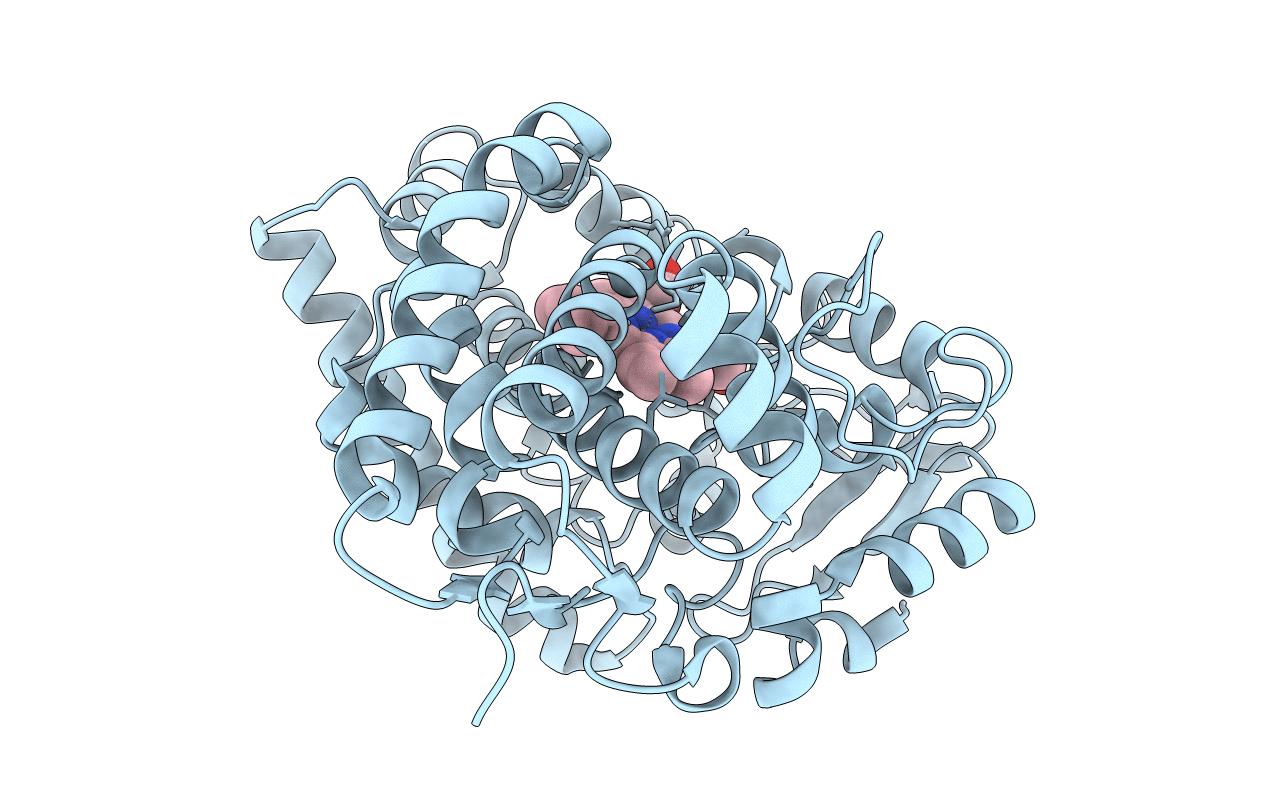
Deposition Date
2018-05-18
Release Date
2018-08-08
Last Version Date
2024-01-17
Entry Detail
PDB ID:
6GK5
Keywords:
Title:
Crystal structure of cytochrome P450 CYP267B1 from Sorangium cellulosum So ce56
Biological Source:
Source Organism:
Sorangium cellulosum (Taxon ID: 448385)
Host Organism:
Method Details:
Experimental Method:
Resolution:
1.60 Å
R-Value Free:
0.20
R-Value Work:
0.18
R-Value Observed:
0.18
Space Group:
P 21 21 21


